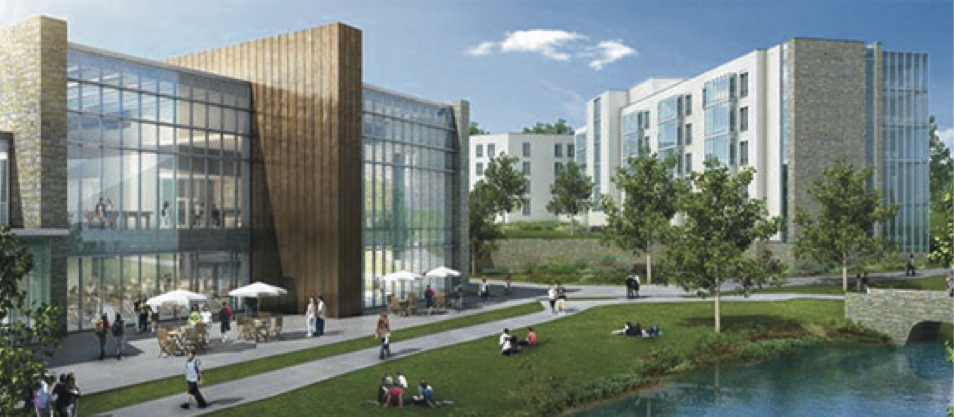The ground will see the first shovel today as the groundbreaking of Pace’s master plan is under way.
Today, the master plan board will celebrate the beginning of a new chapter for Pace’s construction. The main parking lot K on the Pleasantville campus was closed on Oct. 5 to begin the preparation for the big change of the master plan and the hope to make campus greener. The master plan hopes to incorporate not only student ease and pedestrian travel but also a greater efficiency for the operation of campus.
“In 1977 Pace purchased Briarcliff College, which at the time was very cost effective to supply housing for the new influx of students. Many of the buildings that are currently on the Briarcliff campus are in need of much required maintenance as they are old buildings, and it is just not cost effective to have this continuous repair,” Senior Vice President and Chief Administrative Officer William McGrath said. “Although students and faculty may have sentimental reasons for keeping the Briarcliff campus I think that the efficiency of running only one campus will be a positive experience.”
The master plan incorporates many new ideas to create a greener and sustainable campus.
The Environmental classroom building will have many features in order to maximize its sustainability. The building will strive to achieve a Leadership in Energy and Efficiency Design (LEED) gold level or higher rating which over exceeds the standard requirements for the building. LEED is an organization dedicated to creating a system of rates for buildings, whether they are residential or corporate. The LEED rating for a gold building incorporates sustainability, water efficiency, energy and atmosphere quality, materials and resource quality, and indoor environmental quality.
The solar panels that are on the current environmental building will be moved to the roof of the new Environmental classroom building in order to maximize their use of and direction toward the sun. The incorporation of other solar panels on the campus is part of the plan that will be considered.
The residential halls will include all new ideas that incorporate sustainability. They will have bike racks indoor and outdoor for students. The lights will all be LED in order to make more efficient light use. There will also be more windows in the residential halls and the classroom buildings.
The project hopes to create a pedestrian geared campus that will promote campus living. The idea is to remove the roads that cause traffic throughout campus and place them only around the perimeter of the campus. The project’s goal is to provide a quad set up that will encourage walking, living, learning on campus. With the one campus,McGrath thinks that students will have the chance to become more engaged in evening events and organizations as well as study groups without the worry of travelling back to Briarcliff campus either on the bus or with a car.
The bus alone makes over three thousand trips per year and is not very cost effective or environmentally friendly. Although the bus is a better alternative than every student driving themselves, it would be a much more effective situation if there was no longer a need for the bus.
“Making the campus a more pedestrian friendly one will hopefully encourage students to be more involved on the campus,” McGrath said. “Studies show that students that are more involved create the best predictions for a higher student graduation rate. Students that are involved will be the best when comes time for the search for a job after college.”
Although the master plan has some aspects that will be tested after implementing in order to maximize effectiveness the main goal is to create a very environmentally aimed campus.
“With the environmental program that we have at pace it is just the next step to create a sustainable campus,” McGrath said. “It just makes sense.”

